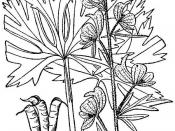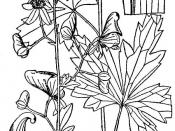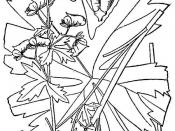When we think of poisonous plants, what comes to mind? Poison Ivy, Poison Oak, Indian hemp, etc... But do we ever think that there are hundreds of poisonous plants throughout the United States that we have never heard of such as Monkshood, Larkspur, Buckwheat, etc... Well, Created on this is one plant we don't want to run into.
This poisonous plant is known as Monkshood, Aconite which derives from the family name: Ranunculaceae. It has been found to be located in the lower mountain slopes of North portion of Eastern Hemisphere. From Himalayas through Europe to Great Britain, Aconite is now found wild in a few parts of England, mainly in the western counties and also in South Wales, but can hardly be considered truly indigenous. It was very early introduced into England, being mentioned in all the English vocabularies of plants from the tenth century downwards, and in Early English medical recipes.
In the Western United States, most suspected cases of Aconitum poisoning prove to be due to tall larkspur which grows more abundantly in the same areas. Human poisoning occurred in the past due to the misuse of medicinal extracts of aconitine. Occasionally, poisoning occurs when the root of monkshood is mistakenly eaten for root of wild horseradish or other wild plants
Highly toxic, monobasic diterpenoid alkaloids including aconitine, mesaconitine, and hypaconitine form the principle toxins in monkshood. The alkaloids are similar to those found in Delphinium species. All species of monkshood including cultivated species should be considered toxic to animals and humans. All parts of the plant are toxic, but the roots, seeds and preflowering leaves are especially toxic. Although there is no extensive documentation of the toxic dose of monkshood, horses have been reportedtto be fatally poisoned after eating 0.075% of their body...


